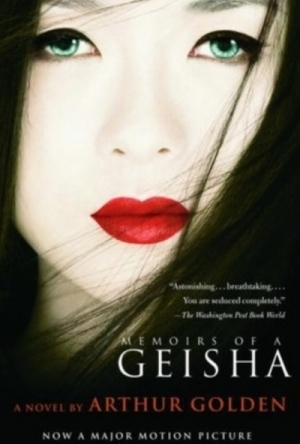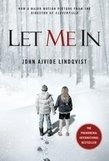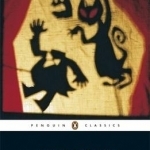The Bandersnatch (199 KP) rated Memoirs of a Geisha in Books
Nov 7, 2019
My opinion of the book is one of both curiosity and interest. Japan is one of those countries where its history and culture is both unusual and mysterious. The book gives a brief glimpse into the hidden world of the Geisha which are a prominent spot in Japanese culture but are relatively unknown world wide. I believe that the story of Sayuri is one of personal travel and evolution. Since we see Sayuri';s experience as a child before becoming a Geisha, experiencing the horror of war and eventually finding love with the Chairman.
Arthur Golden was born on December 6th 1956 in Chattanooga, Tennessee. When he was eight years old his parents divorced with his father dying five years later. He spent most of his childhood living in lookout mountain, Georgia before graduating from the Baylor school in Chattanooga in 1974. After earning a degree in Fine art (Specifically Japanese art), an M. A. in Japanese history, Golden spent a summer at the Peking University in Beijing and spent some time working in Tokyo. When he returned to the states he earned an M. A. in English at Boston University. Golden married Trudi Legge and they went on to have two children Hays and Tess.
After getting the initial idea for Memoirs of a Geisha Golden spent six years over the story rewriting it at least three times, changing the view point until settling on the viewpoint of Sayuri. Golden had spent time interviewing several Geisha including Mineko Iwasaki (who ended up suing Golden when the Japanese version of the book came out for breach of contract.....the case was settled out of court in 2003) all of whom provided information about the world of the Geisha. After its release Memoirs of a Geisha spent two years on the New York Times bestseller list, its sold more than four million copies in English alone and has been translated into thirty-two languages around the world. In 2005 the book was made into a movie garnering three academy awards.
My opinion of Arthur Golden is very small and somewhat limited.......I believe he is a fantastic writer and very knowledgeable about Japanese history and art....Much more so than I am but hearing he faced being sued because of citing who his sources were when he was contracted not to has put something of a dampener on his character in my eyes.
Memoirs of a Geisha was released as a Movie on December 9th 2005 under director Rob Marshall and Produced by Steven Spielberg's production Company Amblin Entertainment and Spyglass Entertainment. With its production from pre- to post-production taking place mainly in California US, with a few spots filmed in Kyoto Japan. The movie received mixed reviews in the western world and received somewhat negative reviews in Japan due to its mixed casting of Chinese and Japanese actors and actresses and its relationship to history. Despite the chaos they won three Academy Awards (Best Art Direction, Best Cinematography and Best Costume Design), a Golden Globe (Best Original Score), A national Board of review (Best Supporting Actress), a satellite award (Outstanding screenplay) and three BAFTA's (Cinematography, Costume design and the Anthony Asquith award for Achievement in film music).
Whilst I quite like the movie I definitely feel that if more effort was put into tying more of both Japanese and Geisha history was some how tied into the movie. As well as using more Japanese Actors and actresses in the roles......despite that I believe the actors and actresses did a very good job in brining the script to life and keep a layer of mystery and fluidity to their roles.
And there you have it a book for all the ages, its definitely under the banner of AWESOME!!!.
Purple Phoenix Games (2266 KP) rated Dogo Dash in Tabletop Games
Oct 15, 2020
Disclaimer: We were provided a PnP version of Dogo Dash for the purposes of this preview. The artwork and colors may see some changes between this preview and the final production, but is the most current version. -L
Dogo Dash is a trick-taking party game in which players are trying to earn points by collecting the most cards by the time the draw deck runs out. Setup is quick and easy – shuffle the deck and deal 4 cards to each player. Looking at their hands, players will then select one card to play this turn, and will place it face-down on the table. Once all players have chosen their card, everyone will reveal their cards at the same time. The player that played the strongest card is the winner for the turn, and collects all of the played cards. The strength of the cards is as follows: Cookie beats Bear and Dog, Bear beats Dog and Cat, Dog beats Cat, and Cat beats Cookie (and therefore all other cards this turn).
In the event of any ties, where multiple players have played the strongest card, play continues with a small change – the cards played in the round of the tie remain on the table. The tied players select another card from their hand and reveal it simultaneously. Whomever wins this tiebreaker collects all the cards. If the tiebreaker ends in another tie, then the tied players split the cards between themselves. If any player plays a Good Boy card, that round automatically is considered a tie, and a tiebreaker commences with all players. All players draw back up to 4 cards, and play continues in this fashion until the draw deck is empty. The player with the most cards at the end of the game is the winner!
As you can see, this game is pretty simple to learn and fast to play! The elements of War and Rock, Paper, Scissors are evident, but altered with more ‘character’ options and a more involved hierarchy of power. Unlike traditional Rock, Paper, Scissors, the animals/cards of Dogo Dash are more versatile in play. Instead of only beating one other type of card, each card will act differently based upon what other cards are played that turn. For example, Dog always beats Cat – unless someone also played Cookie. Because Cat beats Cookie, which beats Dog, so Cat wins this round! Instead of relying simply on numerical order to determine the hierarchy of power, the game feels more engaging and fun to play.
Another neat element is the inclusion of the Good Boy cards. When played, they automatically force a tie. All players then must participate in the tiebreaker. The Good Boy cards could be a strategic way to bag a ton of cards for yourself – forcing a tie and then winning the tiebreaker earns you essentially 2 rounds worth of cards! Or they could just be a silly way to interfere with opponents or just to keep a round from ending. There are also a couple of special card combos that can be played in a round, but I will leave those for you to discover on your own!
So all in all, how does Dogo Dash perform? I think it is a fast, fun, and light little game that can be played in many different situations. Whether you need a small filler game, are introducing newer gamers to the hobby, or want to find a game that is kid-friendly, Dogo Dash fits the bill. The gameplay feels familiar, but with a few twists, and that makes the overall game fun to play. Definitely check out Dogo Dash once it hits Kickstarter – you don’t want to miss out on this treat!

LINE WORKS
Business and Productivity
App
You’re all set to start working once you install LINE WORKS on iPhone and iPad. Quick feedback...

Mister Maker: Let’s Make It! – Design, Draw, Paint, Make and Play
Entertainment and Games
App
IT’S TIME TO GET CREATIVE! Inspired by the hit Kids TV show Mister Maker, this official app is...

Fireman Sam - Fire & Rescue
Games and Entertainment
App
OFFICIAL LICENSED FIREMAN SAM APP New FREE Ocean Rescue Themed Update: Includes an 25 Extra...

Barbarossa Derailed: The Battle for Smolensk 10 July-10 September 1941: Volume 1: The German Advance, the Encirclement Battle and the First and Second Soviet Counteroffensives, 10 July-24 August 1941
Book
At dawn on 10 July 1941, massed tanks and motorized infantry of German Army Group Center's Second...
Acanthea Grimscythe (300 KP) rated Let the Right One In in Books
May 16, 2018
Lindqvist has created for readers a completely deplorable cast of characters, ranging from Eli, the child, to her caretaker, Håkan Bengtsson. These characters aren’t hate-worthy in the same manner as Gone Girl‘s Amy Dunne, but rather in the way that they simply are. I won’t go too much into the details behind why I find the cast of this book to be unsavory, because I feel that just about anything I could say about the characters would, in one form or another, spoil the book; these characters and their flaws, which are bountiful, provide the book with so many unexpected twists and turns that just about anything that could be said might reveal something vital to the plot. Except for my favorite character, which, oddly enough, is Gösta. This may or may not have something to do with the fact that, like Gösta, I adore cats and it is extremely difficult for me to not want to take a stray in. (My boyfriend and I have too many, and I love them more than the entire world!)
The plot takes place over the course of about three weeks, beginning near the last week of October and ending on Friday, November 13. For a book of about five-hundred pages, that’s quite a few days to cover and often, that expanse of time, when it is written as detailed as Lindqvist has penned it, can seem like it simply drags on – that is not the case here. As I read, it felt more like a few days than several weeks, largely because the plot is fast paced and constantly moving. Because there isn’t a lot of exposition, there isn’t really much to slow the story down. Told from alternating perspectives, readers are given several different points of view of what’s going on, and from there it is relatively easy to come to your own conclusions regarding the story’s events as well as the behaviors of the various characters. Those I loathed, others might feel pity for, and vice versa.
Let the Right One In is a vampire novel, as I’ve alluded to earlier in this review; however, Lindqvist does not approach the idea of vampires in the same method that many books do presently. These are not romanticized vampires, but rather monsters. Horrible, bloodthirsty creatures that will rip out your throat, not sparkle – that’s what Lindqvist’s vampires are. This fact alone scores extra points with me, because I prefer vampires as the terrors they are meant to be, rather than the glorified, dark lovers that plague most contemporary literature.
My only gripe with this translation of Let the Right One In deals largely with its flow. While the story itself is excellent and the characters dynamic, the translation seemed to be a bit on the rough side. I do not speak Swedish. If I did, I wouldn’t have a use for the translated version of the story. That said, I know absolutely nothing of the language. Given that my major is in Creative Writing and that I have taken Linguistic courses, I do know that some languages have no tense – at least, not in the way that those of us that speak English view it. That said, there are many times in the translation that I was reading where the tense seemed to switch randomly, and I do not know if this was intentional or not. It was not an issue that I encountered while reading The Girl with the Dragon Tattoo though, so it’s a bit hard for me to be forgiving about it.
This book was definitely worth the read, and I’m hoping that I’ll get a chance to watch the original film adaptation in the future – my boyfriend might have it, actually. I should check!
Acanthea Grimscythe (300 KP) rated Let Me In in Books
May 16, 2018
Lindqvist has created for readers a completely deplorable cast of characters, ranging from Eli, the child, to her caretaker, Håkan Bengtsson. These characters aren’t hate-worthy in the same manner as Gone Girl‘s Amy Dunne, but rather in the way that they simply are. I won’t go too much into the details behind why I find the cast of this book to be unsavory, because I feel that just about anything I could say about the characters would, in one form or another, spoil the book; these characters and their flaws, which are bountiful, provide the book with so many unexpected twists and turns that just about anything that could be said might reveal something vital to the plot. Except for my favorite character, which, oddly enough, is Gösta. This may or may not have something to do with the fact that, like Gösta, I adore cats and it is extremely difficult for me to not want to take a stray in. (My boyfriend and I have too many, and I love them more than the entire world!)
The plot takes place over the course of about three weeks, beginning near the last week of October and ending on Friday, November 13. For a book of about five-hundred pages, that’s quite a few days to cover and often, that expanse of time, when it is written as detailed as Lindqvist has penned it, can seem like it simply drags on – that is not the case here. As I read, it felt more like a few days than several weeks, largely because the plot is fast paced and constantly moving. Because there isn’t a lot of exposition, there isn’t really much to slow the story down. Told from alternating perspectives, readers are given several different points of view of what’s going on, and from there it is relatively easy to come to your own conclusions regarding the story’s events as well as the behaviors of the various characters. Those I loathed, others might feel pity for, and vice versa.
Let the Right One In is a vampire novel, as I’ve alluded to earlier in this review; however, Lindqvist does not approach the idea of vampires in the same method that many books do presently. These are not romanticized vampires, but rather monsters. Horrible, bloodthirsty creatures that will rip out your throat, not sparkle – that’s what Lindqvist’s vampires are. This fact alone scores extra points with me, because I prefer vampires as the terrors they are meant to be, rather than the glorified, dark lovers that plague most contemporary literature.
My only gripe with this translation of Let the Right One In deals largely with its flow. While the story itself is excellent and the characters dynamic, the translation seemed to be a bit on the rough side. I do not speak Swedish. If I did, I wouldn’t have a use for the translated version of the story. That said, I know absolutely nothing of the language. Given that my major is in Creative Writing and that I have taken Linguistic courses, I do know that some languages have no tense – at least, not in the way that those of us that speak English view it. That said, there are many times in the translation that I was reading where the tense seemed to switch randomly, and I do not know if this was intentional or not. It was not an issue that I encountered while reading The Girl with the Dragon Tattoo though, so it’s a bit hard for me to be forgiving about it.
This book was definitely worth the read, and I’m hoping that I’ll get a chance to watch the original film adaptation in the future – my boyfriend might have it, actually. I should check!
Sophia (Bookwyrming Thoughts) (530 KP) rated Fractured Dream (The Dreamer Saga, #1) in Books
Jan 23, 2020
The book had an interesting take on Fairy tales and dreams, but the execution was poor. And there were LOTS of awkwardness.
<b>Dislikes aka Awkward101</b>
~ A few people watching two lovebirds having sex in the prologue. I mean, it wasn't exactly obvious at first, but when the words "I need to see that it's done. I need to know they've conceived" pops up, it's just creepy! If you don't think so, then imagine someone walking into your bedroom at the wrong time. Yep... it's awkward. Really awkward. Sorry might not even cut it.
~ Story yes, it's the main character's name. I'm not going to call her Bob so it makes sense seems to be carefree. She laughs a lot. But while she's carefree, she's sort of knowing as well. At least, that's how it is at the beginning. Later on Story seems all depressed and not confident that she could save the world from Brink.
~ Snow White and Sleep Beauty. These days, I'm done with these two being vampires in all those retellings I'm coming across. -_- Although what's different is an interesting thought: "What if the Real Worlds tastes in literature were somehow affecting the way Fairytales translated here?"
~ The romance between Story and Nicholas is completely unrealistic. They're staring at each other from the moment they meet in Tressla. First kiss? They pretty much make out. And nearly have sex. Haven't you guys heard me complain before about this already?
YA books are definitely growing up.
What's worse is there is a sex scene later. Not exactly graphic thankfully, but no thank you? *cringes away* When I said I was fine with romance, I seriously didn't mean go all out and do THAT.
~ The awkwardness doesn't end: a woman giving birth. Yeah... I'm <s>watching</s> reading about a woman giving birth. Goodness! Where am I? I think I need to change that review policy to middle grade and young adult crossovers only now! This is so not a manual about giving birth in the olden days.
~ Story has some sort of an attitude or aura I don't really like later on in the book. She basically expects all of her followers to listen to her as though she knows best. What kind of leader is that? That makes her as bad as the villain! Yes, everyone respects the leader. But shouldn't a leader listen to opinions as well, even when it's not a democracy? Don't monarchs listen to peasants complaining? Monarchy certainly isn't a democracy. Maybe one of her followers have a better idea.
<blockquote>I am the leader here. Does no one respect that position? Her eyes were lit with a golden fire. This is not a democracy.</blockquote>
<b>Likes</b>
~ Little Red Riding Hood isn't singular. She's a plural! One in each generation! Ever seen that in a fairy tale before?
<blockquote>But Grandma Red isnt the Little Red Riding Hood shes a Little Red Riding Hood. Each generation of their family has onea woman destined to fight her Wolf at some point in her lifetime.</blockquote>
~ Thumbelina makes an appearance, and they're usually in plants. So far, there's two types Red Rose and Morning Glory. The Red Rose Thumbelina makes a big appearance as she's Story's Thumbelina.
Speaking of Thumbelinas... I do enjoy Bliss' snark and attitude. Isn't she just adorable? She's tiny yet mighty!
<blockquote>Dont you dare make me look like a Briar Rose, all dramatic and sappy and full of themselves because Shakespeare wrote about them. I am a Red Rose, you hear me? I have a rep to protect. Do not make me run off with some damned prince. I really dont think I could stomach it.</blockquote>
~ The cover! So pretty... it's so magical and enchanting! Definitely fits the aspect of the book in a way.
Fractured Dream would probably be considered more of a happy read lots of reunions with Story and some of the Tresslans. But it has a lot of awkwardness I'd rather not read about... unless I'm reading Adult romance. Obviously, this is not an adult romance novel, because if it were, I wouldn't have requested it on Netgalley in the first place.
I'll be looking into the sequel though.
---------------------
Review copy provided by the publisher for review
Original Rating: 2.5 out of 5
Original Review posted at <a href="http://bookwyrming-thoughts.blogspot.com/2014/08/review-fractured-dream-by-km-randall.html">Bookwyrming Thoughts</a>
<a href="http://bookwyrming-thoughts.blogspot.com/"><img src="http://3.bp.blogspot.com/-cG5gfBqJVzk/VA5BIojjZ9I/AAAAAAAAD1g/7srLUfpAGEU/s1600/banner.png"; /></a>
Sass Perilla (36 KP) rated The Master and Margarita in Books
Aug 9, 2019
Firstly, I didn’t intend to write an essay on this novel. However, once started I found I had a lot to say, and the more I thought about the plot and characters, the more ideas and parallels were sparked, so I am hopeful that the verbosity of this review can be forgiven.
At the risk of sounding both ignorant and uncultured, I found this novel (at least at first) bloody hard slog; not least because the Russian characters have three names, plus a nickname, plus a pun on their name (none of which work particularly well in translation and all of which sound rather similar to the English untrained ear). As an example- Ivan Nikolaevich Ponyrev (who seems to be referred to by any and all of these names) is also known as “Homeless” and “the poet” is a key character in the opening section of the novel. To further demonstrate: there are 17 different names that start with A that are used to refer to 15 different characters with Andreyevich used as the middle name of a bereaved uncle, who makes a journey from Kiev after his nephew is beheaded in a freak tram accident- and Andrey the buffet manager at a Moscow theatre. Clear as mud right? And that is before starting on similarly named characters with the initials M, P, L and S! At my last count there were 45 distinct characters, and I am fairly sure there will be some that I have missed. Hence, I did a lot of re-reading to work out exactly who was doing what to whom.
Additionally, I would suggest you need to be wary of the different translations. The distinct changes in meaning are subtle but important. To triangulate I had three versions at my disposal: Hugh Aplin’s translation (available for free on Kindle), the audiobook version translated by Richard Pevear and Larissa Volokhonsky (which I listened to simultaneously when reading the book to come to my own interpretation, and the subtitles for the Russian TV miniseries from 2005 when I gave up trying to work out who was who from name alone!
So those were my “technical” issues (if you like) with engaging with this novel, and this lack of clarity and understanding (and my own lack of contextual knowledge of Stalinist Russia) meant I missed many of the (what I am sure are hysterically funny to those in the know) satirical jokes in the opening section. That said, the random action and quick changes of focus, undercurrent of chaos in Moscow despite entrenched hierarchal structures and clear threat that (any) one could go missing at any time, for an unclear reason gave a clear insight into the mind and fears of a 1930s Russian citizen. No wonder it was available only in censored form for so long.
Despite these hardships, there were some genuinely laugh out loud moments in the first Moscow based part of the novel. The citizens have not lost their individuality, as they scrabble and fight for bank notes in the theatre, which are later revealed to be worthless. Nor have they lost their sense of pride and vanity, which we see in the female theatre goers, so desperate to attain the fashionable French couture (which later literally disappears from their bodies leaving semi-naked citizenesses desperately trying to cover themselves in a scene reminiscent of “Allo Allo” meets “Benny Hill”). When Professor Woland says his show will “expose” what the locals have failed to realise is that it is their (moral) shortcomings that are about to be revealed. The message is clearly, that no government can successfully legislate against human nature.
Oooh- and another fun fact, apparently Woland (later revealed- or perhaps is implied- to be Satan) was the inspiration to the Rolling Stones 1968 hit “Sympathy for the Devil”, well at least that is what my Google-Fu tells me.
Obviously, there were substantial hurdles to leap, however, I found by the second half of the novel, when we finally meet the eponymous characters, I had got in to the swing of things and begun to embrace the farcical surrealism of the novel.
The second “book” marks a change in tone, although it continues to cut away to scenes of Jesus’ sentencing by Pilate and execution (here known in the Aramaic form Yeshua). Ironically it is these scenes that are the most “real” and substantially human, as Pilate’s decision weighs head achingly heavily on him throughout. The Master and Margarita seem to be the only two characters fully invested in the authenticity of literature, and serve as a counterpoint to the heavily censored “monstrous” writing of Ivan and the rest of the writers’ union Massolit, more interested in fine dining and what their positions can do for them then the production of quality writing.
And it is Margarita’s journey of discovery and liberation from the stodgy, miserable societal expectations of that leads her back to her Master. Bulgakov mixes classical myth, Russian folklore and Bible stories to give us an impression of the timelessness of the central romance. As the worlds of communist Moscow and the inner worlds of the Master and Margarita collide, we are informed of the former’s desire to excuse all magic (and mischief) as the product of mass hypnosis, when the latter (and the reader) are fully aware of the spiritual significance and dimension of the events.
Clever, astute and in places laugh out loud funny, this novel none-the-less requires a level of dedication from the non-Russian speaking reader. Worth a read? Yes. Worth a re-read? Maybe not.




